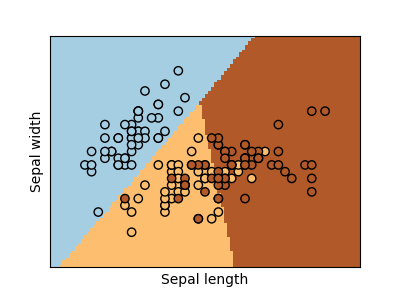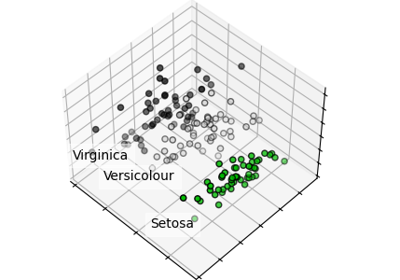Note
Go to the end to download the full example code. or to run this example in your browser via Binder
逻辑回归三分类器#
下图展示了逻辑回归分类器在 iris 数据集的前两个维度(花萼长度和宽度)上的决策边界。数据点根据其标签进行着色。

# 代码来源:Gaël Varoquaux
# 由Jaques Grobler修改用于文档
# SPDX许可证标识符:BSD-3-Clause
import matplotlib.pyplot as plt
from sklearn import datasets
from sklearn.inspection import DecisionBoundaryDisplay
from sklearn.linear_model import LogisticRegression
# 导入一些数据来玩玩
iris = datasets.load_iris()
X = iris.data[:, :2] # we only take the first two features.
Y = iris.target
# 创建一个逻辑回归分类器实例并拟合数据。
logreg = LogisticRegression(C=1e5)
logreg.fit(X, Y)
_, ax = plt.subplots(figsize=(4, 3))
DecisionBoundaryDisplay.from_estimator(
logreg,
X,
cmap=plt.cm.Paired,
ax=ax,
response_method="predict",
plot_method="pcolormesh",
shading="auto",
xlabel="Sepal length",
ylabel="Sepal width",
eps=0.5,
)
# 还要绘制训练点
plt.scatter(X[:, 0], X[:, 1], c=Y, edgecolors="k", cmap=plt.cm.Paired)
plt.xticks(())
plt.yticks(())
plt.show()
Total running time of the script: (0 minutes 0.023 seconds)
Related examples





